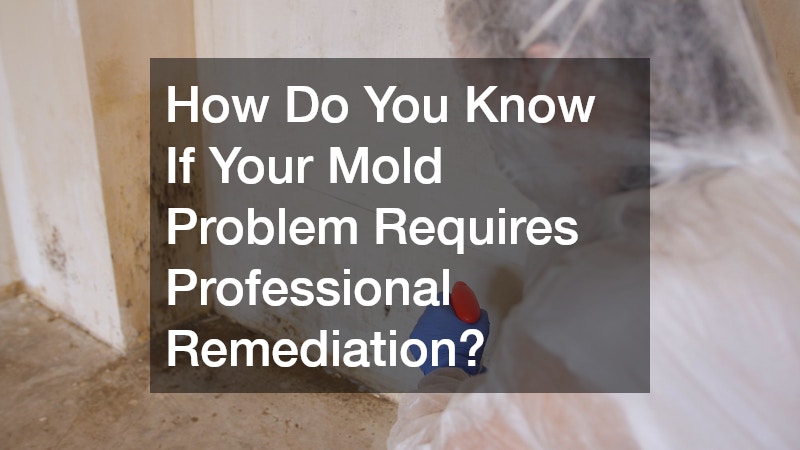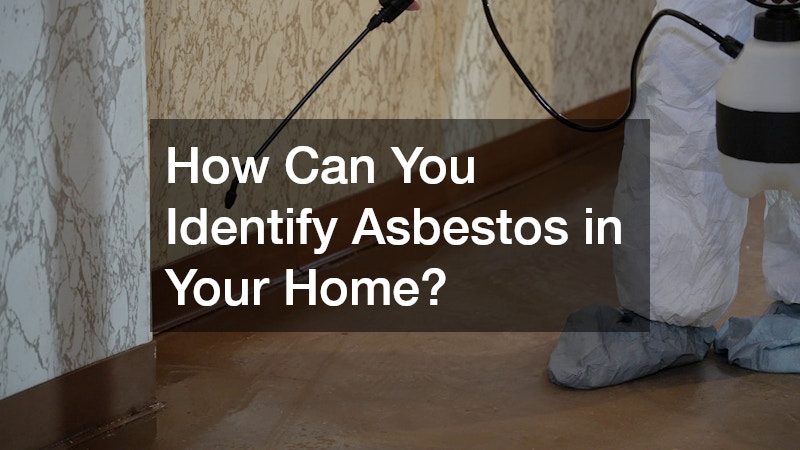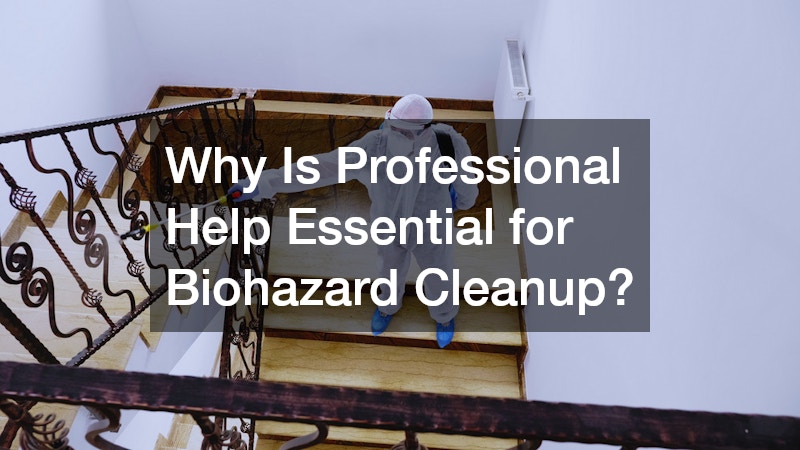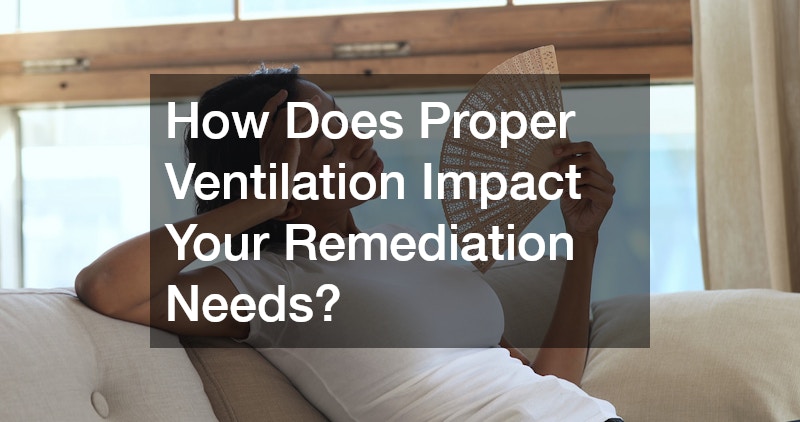Knowing when it is time to call remediation professionals can mean the difference between minor repairs and a full-scale crisis. Damage inside your home is not always visible at first, and by the time you notice issues, they may have already spread. Acting quickly helps you save money, protect your property, and reduce the risk of health problems for everyone inside. Homeowners often delay seeking expert help, either because they underestimate the severity of a problem or because they are tempted to attempt repairs themselves. Unfortunately, waiting too long usually makes matters worse. This article explores the most common scenarios where calling remediation specialists is not just recommended but essential.
What Is Remediation and Why Might You Need It?
Understanding Remediation Services
Remediation is the process of identifying, addressing, and resolving hazards or damage in a property. These hazards can involve mold, asbestos, water damage, biohazards, fire damage, or contaminated air. Professionals assess the scope of the problem and apply specialized techniques to restore the property to a safe, livable condition. Unlike general home maintenance, remediation requires a precise understanding of environmental safety standards and access to advanced equipment.
Common Reasons for Remediation
Most people associate remediation with mold or water problems, but the field extends far beyond that. Homeowners may require remediation after flooding, fire damage, asbestos exposure, or biohazard incidents. Poor ventilation, pest infestations, and lead contamination are also key triggers. Even issues with poor exterior drainage, damaged gutters, or deteriorating roofing can create conditions that eventually require remediation services.
The Cost of Neglecting Remediation Needs
The longer you wait, the more expensive remediation becomes. A small water leak, if ignored, can lead to widespread mold growth that requires significant demolition and rebuilding. Delayed action often forces families to consider financial solutions like a refinance to cover mounting repair costs. While refinancing might help manage the expense, it underscores the importance of addressing problems as soon as possible rather than waiting until they escalate.
Differences Between DIY and Professional Remediation
DIY solutions are appealing because they seem cost-effective. However, amateur fixes rarely address the root cause. Cleaning visible mold without treating underlying moisture, for example, will only allow it to return. Likewise, surface repairs after smoke damage will not remove toxic residue. Professional remediation services go beyond appearances by removing hazards at their source, ensuring long-term safety and structural stability.
Assessing Your Situation: When to Call the Professionals
If damage spreads quickly, involves hazardous materials, or compromises health, the situation calls for expert remediation. Professional evaluation is especially vital for homeowners who are unsure of the full extent of a problem. Trained specialists not only provide accurate assessments but also recommend steps to prevent recurrence.
How Do You Know If Your Mold Problem Requires Professional Remediation?

Identifying Mold Growth in Your Home
Mold growth is often visible in damp corners, basements, or bathrooms, but it can also hide inside walls, behind cabinets, or under flooring. A musty odor is one of the earliest indicators. Even if mold looks contained, there may be more lurking where you cannot see it.
Health Risks Associated With Mold
Exposure to mold can trigger allergies, respiratory problems, and skin irritation. People with asthma or weakened immune systems face even greater risks. These health concerns make mold more than a cosmetic issue. Calling experts for local mold removal ensures safe, thorough elimination while protecting your household’s well-being.
Signs of Extensive Mold Damage
If you notice warped walls, peeling paint, or structural softening near damp areas, mold has likely spread beyond the surface. In such cases, remediation involves more than cleaning. Professionals assess the damage, replace compromised materials, and address the conditions that allowed mold to thrive in the first place.
DIY Mold Solutions vs. Professional Services
Cleaning small spots of mildew with household products may seem adequate, but widespread mold requires specialized equipment such as air scrubbers and dehumidifiers. Professionals also perform testing to confirm mold types, as certain varieties pose greater risks than others.
How Professionals Handle Mold Remediation
Mold remediation experts contain affected areas to prevent spores from spreading, remove damaged materials, and treat remaining surfaces with antimicrobial solutions. They also identify and eliminate moisture sources, which might involve recommending basement waterproofing or gutter repairs to stop water from reentering the home.
What Are the Indications of Water Damage Needing Remediation?
Common Causes of Water Damage
Water damage can result from leaking roofs, burst pipes, appliance failures, or natural flooding. Basement leaks are especially common in older homes without modern waterproofing. Even small leaks can gradually undermine the foundation and invite mold growth.
Recognizing Warning Signs of Water Damage
Stains on ceilings, soft walls, musty smells, or unexplained spikes in your water bill are signs you may have hidden leaks. Standing water in the basement or warped flooring suggests more advanced damage.
Dangers of Untreated Water Damage
Water can weaken structural supports, corrode metal, and destroy electrical systems. If not resolved quickly, it creates ideal conditions for mold and bacteria. These dangers make water remediation urgent, as untreated damage spreads rapidly.
When to Call in the Experts for Water Damage
Homeowners should call professionals at the first sign of widespread moisture. Specialists can detect hidden leaks, assess the full scope of damage, and restore affected areas. They also provide preventive advice, such as working with residential plumbers to improve pipe systems or hiring local roofers to stop future leaks.
The Process of Water Damage Remediation
Water damage remediation involves removing excess water, drying affected areas, disinfecting surfaces, and repairing structural elements. In severe cases, damage restoration services may also be needed to rebuild compromised parts of the home.
How Can You Identify Asbestos in Your Home?

Historical Use of Asbestos in Building Materials
Asbestos was once a popular choice for insulation, flooring, and siding because of its durability and fire resistance. Many homes built before the 1980s still contain asbestos materials.
Health Effects of Asbestos Exposure
Exposure can cause severe lung diseases, including asbestosis and mesothelioma. Because asbestos fibers are microscopic, they pose an invisible but serious health threat.
Spotting Potential Asbestos Contamination
Crumbling insulation, cracked floor tiles, or deteriorating siding in older homes may contain asbestos. Since testing is the only way to be sure, calling licensed professionals is essential.
Legal and Safety Aspects of Asbestos Removal
Strict regulations govern asbestos removal to protect public health. Homeowners are not legally permitted to attempt removal themselves in many regions.
Professional Asbestos Remediation Techniques
Licensed contractors use specialized containment methods and protective equipment to safely remove and dispose of asbestos materials.
What Role Does Air Quality Play in Determining the Need for Remediation?
Common Indoor Air Pollutants
Pollutants such as mold spores, pet dander, chemical fumes, and smoke can build up inside homes.
Symptoms of Poor Indoor Air Quality
Fatigue, headaches, frequent coughing, and worsening allergies are signs of compromised air quality.
Testing for Indoor Air Quality
Specialized tests measure levels of allergens, mold, and other pollutants. Remediation professionals often provide these services alongside inspections.
Solutions to Improve Air Quality
Solutions may include air filtration, improved ventilation, and sealing leaks that allow contaminants inside.
How Remediation Professionals Can Help
Professionals identify the sources of poor air quality and implement effective strategies. In some cases, solutions may involve coordination with local tree companies to remove damaged trees affecting ventilation systems or local garage door replacements to seal off entry points for pollutants.
Why Is Professional Help Essential for Biohazard Cleanup?

Understanding Biohazard Situations
Biohazards include sewage backups, chemical spills, and contamination from accidents or crime scenes.
Risks of Handling Biohazards Without Expertise
Attempting to clean up biohazards without training exposes you to dangerous pathogens and harmful chemicals.
Required Standards for Biohazard Remediation
Strict health and safety standards dictate how biohazards must be contained, removed, and disposed of.
Benefits of Professional Biohazard Cleanup
Experts ensure complete decontamination while protecting property and health.
The Process of Biohazard Remediation
This process typically includes isolating the area, removing contaminated materials, disinfecting thoroughly, and performing damage restoration if necessary.
What Are the Risks of Ignoring Fire and Smoke Damage?
The Immediate Impact of Fire and Smoke
Fires cause visible destruction, but smoke and soot can penetrate deep into materials and remain long after flames are extinguished. These hidden contaminants often require extensive remediation to fully restore safety.
Long-Term Structural Damage from Fire
Heat can weaken support beams and other structural components, making the property unsafe. Even if damage is not immediately obvious, the home’s integrity may be compromised over time.
Health Implications of Smoke Residue
Smoke residue contains toxic particles that irritate the lungs and may contribute to long-term health conditions. Children, the elderly, and those with respiratory issues are especially vulnerable to its effects.
How Professionals Address Fire and Smoke Damage
Professionals use specialized cleaning methods, deodorization, and structural assessments to restore safety. They also ensure that hidden smoke particles are removed from air ducts and ventilation systems.
Steps in Professional Fire Damage Remediation
Steps often involve debris removal, cleaning, structural reinforcement, and ongoing monitoring for hidden damage. This thorough process helps ensure the property is safe for reoccupation.
How Does Proper Ventilation Impact Your Remediation Needs?

The Importance of Home Ventilation
Adequate airflow reduces humidity, prevents mold growth, and improves overall indoor health. Proper ventilation also helps regulate temperature, creating a more comfortable living environment year-round.
Signs of Ventilation Issues
Condensation on windows, persistent odors, or mold in damp areas may signal poor ventilation. Uneven heating and cooling throughout the home can also indicate circulation problems.
Challenges Due to Poor Ventilation
Without proper airflow, pollutants accumulate and moisture damage worsens. Over time, this can contribute to structural decay and increased health risks for occupants.
Improving Ventilation to Avoid Damage
Homeowners may need impact window replacements, upgraded HVAC systems, or repairs to existing ventilation structures to ensure healthy airflow. Investing in these improvements not only prevents damage but also increases energy efficiency.
Remediation Solutions for Ventilation Problems
Remediation specialists assess air circulation and implement corrective measures to stop recurring damage. Their expertise ensures that both immediate concerns and long-term risks are fully addressed.
How Do Pest Infestations Lead to the Need for Remediation?
Common Pests That Cause Structural Damage
Termites, rodents, and carpenter ants often cause extensive property damage if untreated. Their activity can weaken wooden beams and compromise the overall safety of a home.
Identifying Signs of Pest Infestation
Droppings, gnaw marks, and hollow-sounding wood can indicate pest activity. Strange noises within walls or ceilings may also point to a growing infestation.
Consequences of Untreated Pest Infestations
If left unchecked, infestations may compromise foundations, walls, and insulation. This kind of neglect often results in expensive remediation and long-term structural instability.
Professional Pest and Damage Remediation
Professionals eliminate pests, repair structural issues, and ensure sanitation. They also provide guidance on preventing reinfestation through routine maintenance and monitoring.
Preventative Measures Against Future Infestations
Preventive steps might involve coordinating with local roofers to close access points or arranging gutter repairs to remove conditions that attract pests. Regular inspections and prompt repairs help reduce the risk of pests returning.
When Is It Time to Deal With Lead Contamination?
Understanding the Dangers of Lead
Lead exposure can cause developmental problems in children and serious health effects in adults. Long-term exposure can also result in neurological issues that permanently affect quality of life.
Identifying Lead Sources in Your Home
Older homes may have lead-based paint, plumbing, or contaminated soil around the property. Even small amounts of lead in dust or water can present significant health hazards over time.
Regulations Surrounding Lead Remediation
Strict rules exist to protect homeowners during lead removal, requiring certified professionals. These regulations are designed to prevent improper handling that could spread contamination further.
Choosing Qualified Professionals for Lead Removal
Certified specialists ensure compliance with safety and legal standards while protecting residents. Their training allows them to use approved techniques that minimize risk during the process.
Steps in Lead Remediation
The process includes identifying contaminated materials, safely removing them, and restoring affected areas. Professionals also verify that the environment meets safety standards before residents return.
Recognizing the signs that indicate the need for remediation is essential to protecting both your home and your health. Whether the problem involves mold, water damage, asbestos, biohazards, fire, or pests, professional intervention ensures a safe, thorough solution. In some cases, remediation may involve broader home improvements, such as basement waterproofing, impact window replacements, or even local garage door replacements, to prevent issues from returning. Reliable experts, whether residential plumbers, local roofers, or local tree companies, can work alongside remediation specialists to safeguard your property. Acting quickly not only prevents hazards from spreading but also gives you the peace of mind that your home is safe, stable, and ready for the future.
